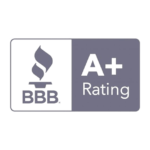Beyond the Brochure: Leveraging 360 Virtual Tours for Immersive University Tours
In today’s digital age, where the lines between the virtual and the real are increasingly blurred, universities are recognizing the importance of adapting to the expectations of a generation raised in the realm of pixels and screens. The days of static brochures and one-dimensional campus visits are fading into obscurity as educational institutions harness the power of 360-degree virtual tours to offer prospective students an immersive glimpse into campus life.
For today’s digital natives, who have grown up in a world where virtual interactions are second nature, these immersive tours are not just a convenience but an expectation. Recent studies indicate that the average 17-year-old spends a significant portion of their day on social media platforms, with some estimates suggesting up to 5.8 hours per day on platforms like Instagram, TikTok, and YouTube. For them, virtual tours are not merely a novelty but a natural extension of their digital existence.
This shift in consumer behavior is driving universities to rethink their approach to campus visits. No longer satisfied with static images and text-heavy brochures, prospective students crave immersive experiences that allow them to truly envision themselves as part of the university community. By embracing 360-degree virtual tours, universities are not only meeting students where they are but also expanding their reach and access.
One of the key advantages of virtual tours is their ability to transcend geographical limitations. Prospective students from around the globe can now explore campuses with just a few clicks of a button, eliminating the need for costly and time-consuming travel. This democratization of access ensures that talented individuals from diverse backgrounds have the opportunity to consider a wider range of options when choosing a university.
However, the benefits of virtual tours extend beyond mere accessibility. They also serve as powerful tools for engaging prospective students in a way that traditional brochures simply cannot match. According to a study conducted by Zillow, listings with 3D virtual tours receive up to 50% more views than those without. Similarly, universities that offer virtual tours report higher levels of engagement and interest from prospective students.
Moreover, the effectiveness of these tours is not merely anecdotal. Universities can track metrics such as engagement rates, click-through rates, and time spent on each page to measure the impact of their virtual tour offerings. By analyzing this data, institutions can gain valuable insights into prospective students’ interests and preferences, allowing them to tailor their recruitment strategies accordingly.
In a world where vlogs and virtual experiences reign supreme, 360-degree virtual tours are the logical evolution of campus visits. Just as influencers and vloggers provide authentic and immersive glimpses into their lives, virtual tours offer prospective students a window into the university experience. By harnessing the power of technology, universities can create compelling narratives that resonate with today’s digital-savvy generation.
In conclusion, beyond the glossy brochures and scripted campus tours lies a world of possibilities waiting to be explored. 360-degree virtual tours offer a dynamic and immersive alternative that not only engages prospective students but also expands access and drives enrollment. As universities continue to adapt to the ever-changing landscape of higher education, embracing virtual tours is not just a choice but a necessity in meeting the expectations of today’s students.






















